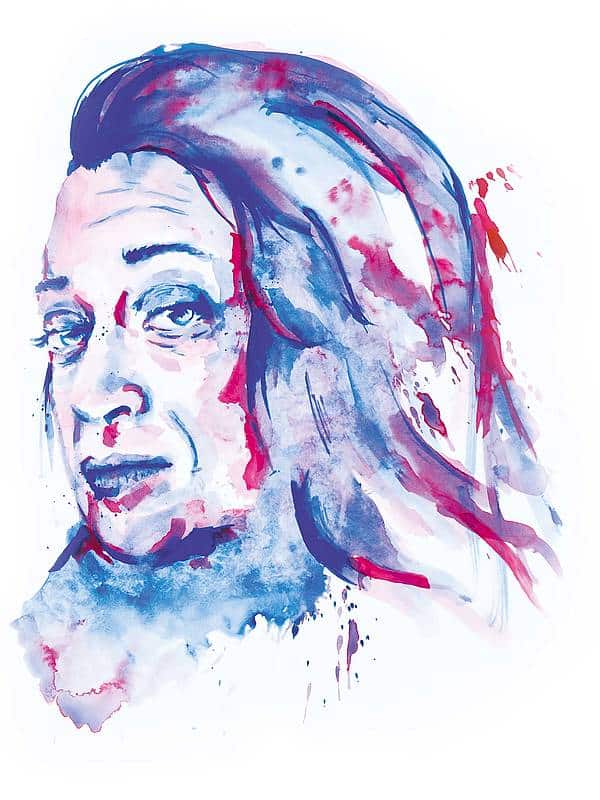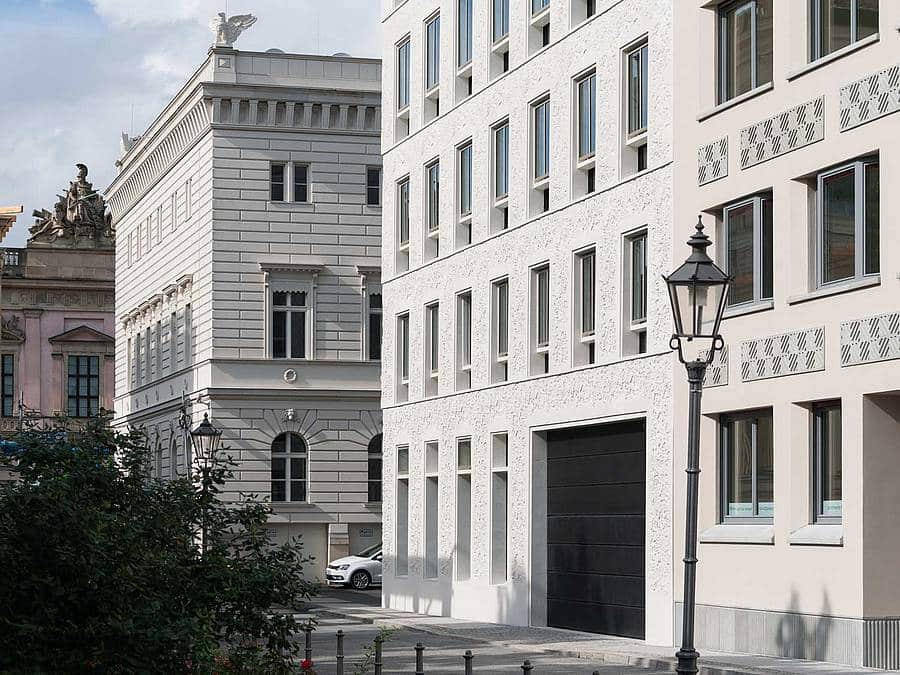
Stories
A woman of many dimensions
First ridiculed, then honored, now missed: Zaha Hadid followed her architectural vision unperturbed, becoming a grand dame of architecture. Her work has changed architecture today.
She didn’t like labels. Just like her buildings, which always question standard definitions, Zaha Hadid avoided any pigeon holes for herself and her work. Her designs defy dimensions, she wanted to be free: free of conservative thinking, architectural routine, old spacial forms.
It’s provocative. To understand her better, you try to label her: background, gender, attitude. But nothing sticks – Zaha Hadid offers several interpretations for each of these categories.
She said in an interview in 2009 that she didn’t really care what people thought of her. But: she walked out of a BBC interview because the presenter’s provocative questions were irritating her. She sued the ‘New York Review of Books’ after the magazine claimed that she didn’t care about the perilous working conditions on the construction site of a football stadium in Qatar. Hadid had the last say when it came to interpreting the Hadid brand.
And so, appreciation of Hadid could also simply be acknowledging the various different dimensions of this grand dame. And that she is still a mystery even after her death.

Zaha Hadid, the arab woman
Iraqi heritage, Babylonian culture, Arabian spirit: Hadid didn’t hide her roots. Born into one of the richest families in Baghdad in 1950, she lived in a land of change. Countless construction projects in the city reflected this change, while she lived with her parents in a Bauhaus-style house decorated with Italian furniture. Hadid influenced the design: she designed her own bedroom. An Iraqi craftsman realized her design and used it as the blueprint for more commissions. At just 11 years old, Hadid already knew she wanted to become an architect.
She discovered Europe and other cultures on trips with her family. She was educated in a monastery school in Iraq, then a Swiss boarding school. She studied mathematics in Beirut before embarking on an architecture degree in London in 1972. London became her home, and Hadid became a citizen of the world: always flying between clients, construction sites and inaugurations. She wanted a certain degree of hectic restlessness. Whoever tried to assign this nomadic existence to her roots was met with a dry smile. Nationality was not a pigeon hole for Hadid.
Zaha Hadid, the woman in a man´s world
She admitted that it’s hard for women in architecture. But she didn’t want anything on a plate. Hadid would not be discouraged – or pandered to. She believed in her vision, fought for her success and always said no if she didn’t like a compromise. Her strong will gave her the reputation of being difficult. “If I was a man, no one would say that,” she contested. She felt that women weren’t welcome in the “boys’ club“ of architecture. “I do not like being reduced to my heritage, my past or even my role as a woman,” she explained. For her, only characterization was acceptable: “I’m an architect and, as such, deal with the future of construction and living.”
Zaha Hadid, the woman without compromise
Her first building, the Vitra Fire Station, was cast in extreme concrete shapes in 1993. Hadid’s design rejects the right angle, and the sharply angled building seems to almost spring out at the viewer. A building ready to attack, a radical design. Her approach put off a lot of clients, and there was a long time with few commissions. When she got her chance, Hadid left her mark: in 2003 with the Rosenthal Centre for Contemporary Arts in Cincinnati, in 2004 with the BMW factory in Leipzig, and in 2005 with the phaeton Science Museum in Wolfburg: enormous, strong buildings made from concrete and steel.
And then she suddenly went soft: in contrast to her previous designs, the Hungerburgbahn Station in Innsbruck flows and seems to float above the ground. More than a decade after her debut, Hadid’s designs adopted soft forms. The mobile Chanel Pavillon, the Guangzhou Opera House in China, the Heydar Aliyev Centre in Azerbaijan: Hadid was now designing buildings like sculptures. The architect’s form language had changed, but her goal was the same: to create new forms of space, to allow new ways of living.
Zaha Hadid, the discoverer of the new
Shapes, materials, ideas: to develop further, Hadid believed you had to constantly question everything. From the first thought through to the final design, her office generally produced hundreds of versions with which Hadid and her team created new spacial concepts and dimensions.
Change was a decisive topic for Hadid. She saw the constant renewal of technology and art, and decided that architecture must also embrace this change. She saw the possibilities of computer technology early on. She saw the computer as a design medium that could be used to make designs more free and dynamic. Even though she saw computers as new, promising design instruments, she remained tethered to the analogue world on a personal level. She much preferred paper; she could visualize her ideas much more quickly on a sketch pad. Over the years, she perfected her technique: she drew countless abstract buildings from above, then the actual design, coloring in individual surfaces and details. Her drawings are pieces of art in themselves, traded on the market for tens of thousands of dollars.
Zaha Hadid, a unique woman
She might have actually liked this label. Still: Hadid’s work is being continued on after her death. Her firm Zaha Hadid Architects (ZHA) employs around 300 architects and is currently working on projects like the One Thousand Museum tower in Miami and the Danjiang Bridge in China. Who can fill her shoes? Rem Kolhaas believes that ZHA can carry on Hadid’s work by following in the footsteps of fashion houses: famous labels such as Alexander McQueen and Chanel were able to retain their meaning after losing their creative heads by concentrating on their artistic DNA. Thanks to Karl Lagerfeld, Chanel cemented and expanded its status, and the house of Alexander McQueen is now being successfully run by Sarah Burton. At ZHA, it’s Hadid’s longstanding partner Patrick Schuhmacher who is further developing the grand dame’s work.
Her death has undoubtedly left a large hole, but Hadid’s works and teaching cast a long shadow that reached far beyond her own office even when she was alive. All across the globe, budding architects admire and emulate her designs. Students of her last course at the Yale School of Architecture recently presented the design for the Bishopsgate Goodsyard in London, the last undeveloped space in the metropolis. The design honors Hadid with an ensemble of buildings with both sculptural elements and flowing forms, and reflects her philosophy: “I believe that architecture can express something that we’re not aware of yet, that it’s possible – a new order of things, another view of the world.”
Awards
2016 RIBA Royal Gold Medal
2015 Artnet 100 Most Influential People in the Art World
2014 ACADIA (Association of Computer Aided Design in Architecture) Lifetime Achievement Award
2012 Dame Commander of the Order of the British Empire for services to architecture
2011 Arabian Business Magazine’s ‘World’s 50 Most Powerful Arabs’
2006 ‘Deutscher Betonbaupreis’ for the main building at the BMW factory in Leipzig
2004 ‘Pritzker-Preis’ London Architect of the Year, London Architectural Biennale
2003 Mies van der Rohe Award for European Architecture

